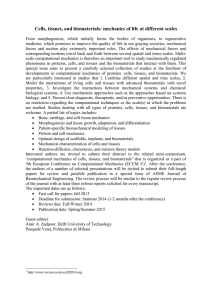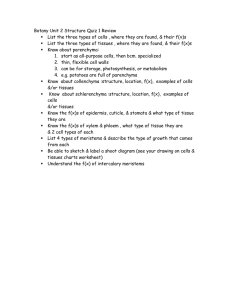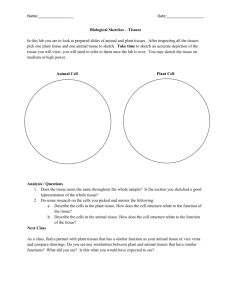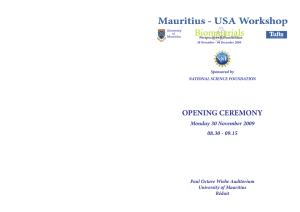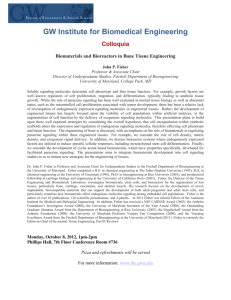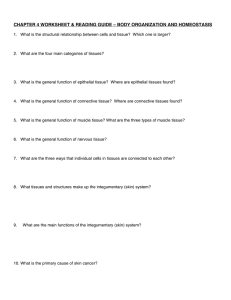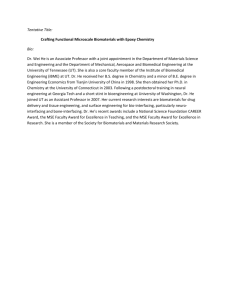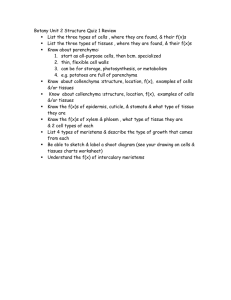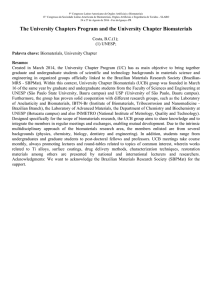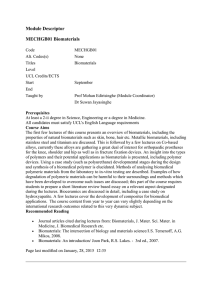Ehsan Jabbarzadeh, Ph.D.
advertisement
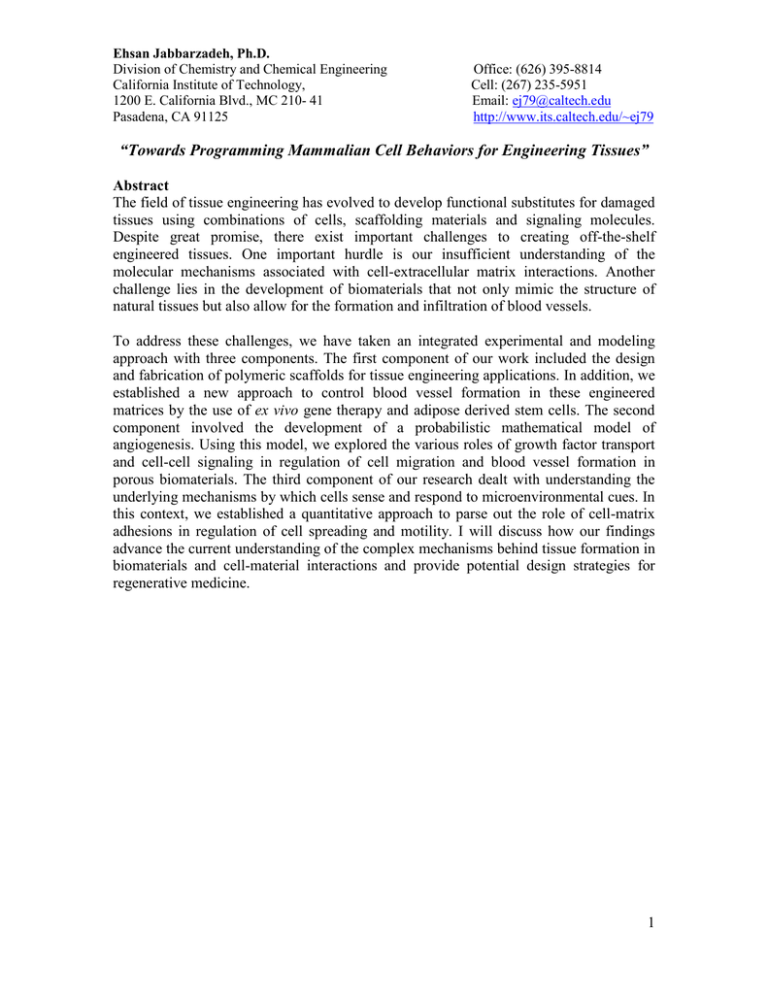
Ehsan Jabbarzadeh, Ph.D. Division of Chemistry and Chemical Engineering California Institute of Technology, 1200 E. California Blvd., MC 210- 41 Pasadena, CA 91125 Office: (626) 395-8814 Cell: (267) 235-5951 Email: ej79@caltech.edu http://www.its.caltech.edu/~ej79 “Towards Programming Mammalian Cell Behaviors for Engineering Tissues” Abstract The field of tissue engineering has evolved to develop functional substitutes for damaged tissues using combinations of cells, scaffolding materials and signaling molecules. Despite great promise, there exist important challenges to creating off-the-shelf engineered tissues. One important hurdle is our insufficient understanding of the molecular mechanisms associated with cell-extracellular matrix interactions. Another challenge lies in the development of biomaterials that not only mimic the structure of natural tissues but also allow for the formation and infiltration of blood vessels. To address these challenges, we have taken an integrated experimental and modeling approach with three components. The first component of our work included the design and fabrication of polymeric scaffolds for tissue engineering applications. In addition, we established a new approach to control blood vessel formation in these engineered matrices by the use of ex vivo gene therapy and adipose derived stem cells. The second component involved the development of a probabilistic mathematical model of angiogenesis. Using this model, we explored the various roles of growth factor transport and cell-cell signaling in regulation of cell migration and blood vessel formation in porous biomaterials. The third component of our research dealt with understanding the underlying mechanisms by which cells sense and respond to microenvironmental cues. In this context, we established a quantitative approach to parse out the role of cell-matrix adhesions in regulation of cell spreading and motility. I will discuss how our findings advance the current understanding of the complex mechanisms behind tissue formation in biomaterials and cell-material interactions and provide potential design strategies for regenerative medicine. 1

